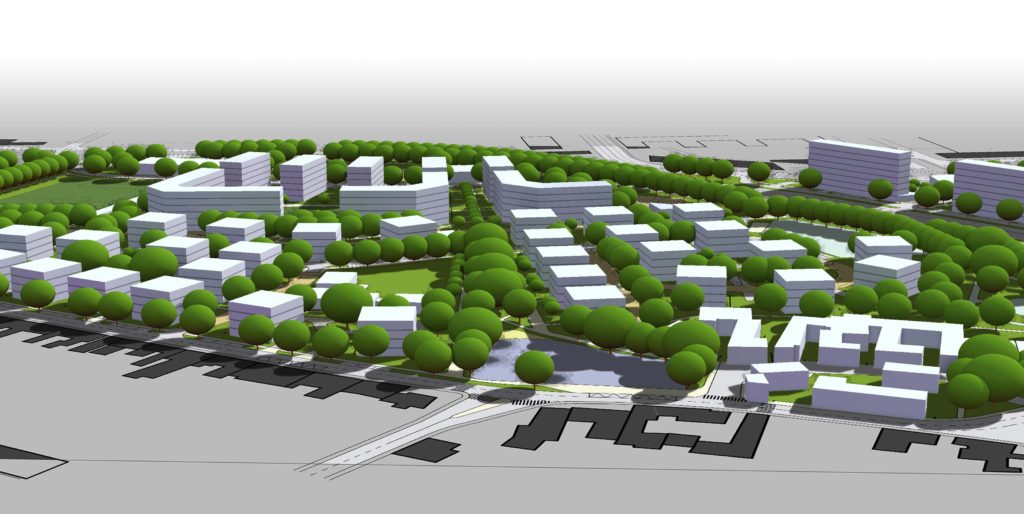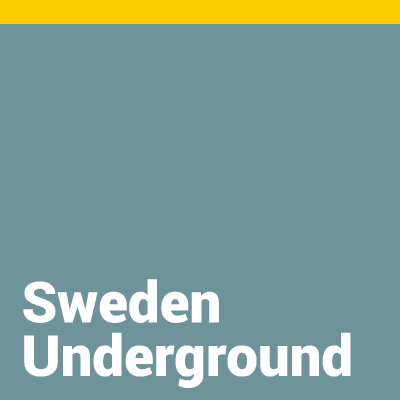A good urban environment includes easy access to the city centre. Short travel distances, efficient public transport, and meeting places for people are important. Parks, streets and squares, clean air, and access to natural areas and water, are significant to what people perceive as attractive and how they experience the urban environment. A perception of safety is also important.
Demand for land for both residences and commercial properties is increasing most where there is greatest accessibility on foot or by public transport. This increase in demand continues to push up the price of land, and with ever-increasing prices, it makes sense to use limited land resources in attractive positions in the most efficient way. This is where underground planning and construction can make a valuable contribution to meeting the needs of today’s cities.
Underground planning has several unique characteristics that the planner must be aware of. Key aspects are summarized here.
The underground is a finite resource
When a tunnel or a rock cavern has been excavated, this leaves a permanent cavity, and the rock cannot be restored to its original state. Rock is a finite resource, so planning must be long term.
If there is no long-term perspective in planning, there is a risk that attractive locations in the rock are used in such a way that prevents the use for other, perhaps more important, purposes in the future. Overall resource planning is therefore necessary, integrating planning above and below ground, particularly in large cities.

Consider existing facilities
It is also important to be aware of the positions of existing underground facilities, the foundations of buildings above ground, energy wells, and other structures that affect the possibility to build underground. Often, these are difficult to detect from the surface. Documentation and registration of existing facilities, and information regarding rock and other surveys, should therefore be readily available. In some municipalities, where many facilities are built underground, special maps have been produced to facilitate information searches.
Geology determines where facilities can be built
Project planners need to consider various uncertainties relating to construction in rock. The rock varies in quality with regard to building. Large sections of high-quality rock are often surrounded by zones of weaker, fractured rock. Rock types of poorer quality can be found inside the rock. Consequently, geological investigations are needed at a very early stage, before the project is designed and construction begins.
Rock spoil
Excavated rocks, corresponding to the volume of the rock cavern, must be managed in some way. The rocks can be used as building material in a crushed or uncrushed state, or used as filling material in land or water areas. If the rock masses can be used, for example as crushed material, this can replace the use of natural gravel, which is positive. Conversely, if the rock is simply deposited in a landfill, this can be expensive and cause environmental problems.
There is an economic and societal benefit if the supply of excavated rock matches the demand. It is therefore desirable that excavated rock is used in a planned and structured way, which generally requires some forward planning; this is the case in many municipalities.
Planning is initiated in different ways
Municipal planning is governed by the Swedish Planning and Building Act (PBL) from 1987, revised in 2011 and 2015. The process involves overall comprehensive planning, detailed development planning and, in some cases, regional planning. The municipal comprehensive plan is the municipalities’ most important instrument for sustainable urban development, where basic principles are formulated for subsequent implementation in the detailed development plan.
Strategies for developing dense city centres are addressed in the municipal comprehensive plan, and sometimes also at regional level. The municipality can coordinate various interests and steer development towards a denser urban environment in strategically important areas where demand is greatest.

Property law and three-dimensional property subdivision
Swedish property law is regulated in the Swedish Land Code and the Real Property Formation Act from 1970, and other legislation. In principle, the owner of a property owns the land under the property down to the centre of the Earth.
In 2004, a new provision on three-dimensional property subdivision was added to the Real Property Formation Act, which introduced layered ownership rights. An underground facility or tunnel, including the zone of protection around the tunnel, can thereby form a separate property. Provisions on property subdivision, such as a three-dimensional property formation, can be incorporated in the detailed development plan.
From a planning aspect, the simplest project is where a project owner builds under land that they own. Permission to build under someone else’s land can be obtained through a cadastral procedure and/or a voluntary easement agreement, which establishes an agreement to build under someone else’s land. It is also common to draw up a leasehold agreement or other right-of-user agreement that applies to the property and is entered in the property register. However, such agreements only apply for a fixed length of time.

Planning is regulated by different laws
PBL (Swedish Planning and Building Act) stipulates that building permits are required for tunnels and rock caverns that are not intended for roads, railways, metro trains or mining operations. Examples of tunnels where building permits are needed are tunnels for telecommunications, wastewater, water and district heating. Rock caverns that require a permit include caverns for storage of oil or liquid natural gas, pumped storage hydroelectricity plants, and hot water storage.
Tunnels for roads, railways and metro do not formally require permits, but one is required for the station building, regardless of whether it is above or below ground. In planning and in building permit cases, structures placed under ground level must be designed in such a way that they do not disrupt or complicate use of the ground above. The intended use must not have such an impact on groundwater or the surroundings in general that people’s health and safety are jeopardised, or cause significant inconvenience in some other way.
An underground construction project may require other types of permit in certain situations. Some exaples are in cases that the project will affect groundwater, for projects that can have a significant environmental impact, such as a large road or railway project; or where a planned underground facility may interfere with or disrupt sites of ancient antiquities or cultural buildings.
Legal constraints applicable to underground construction
All facilities that are to be built must comply with legal provisions. Various types of legislation apply to the planned design and use of an underground facility, and the most important are:
- Planning and Building Act (PBL)
- Roads Act
- Railways Act
- Environmental Code
- Swedish Land Code
- Real Property Formation Act
- Utility Easements Act
- Joint Facilities Act
- Historic Environment Act


